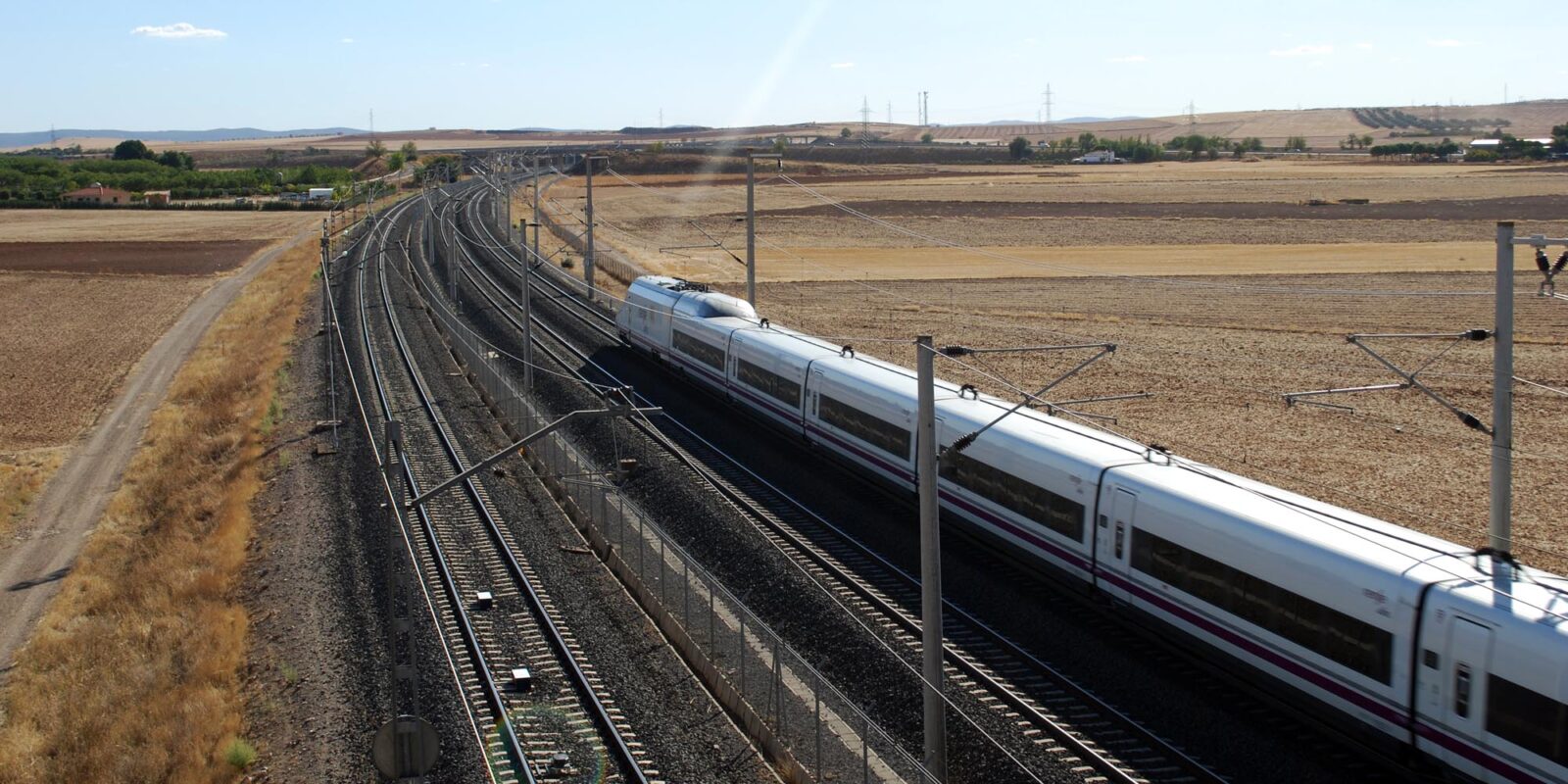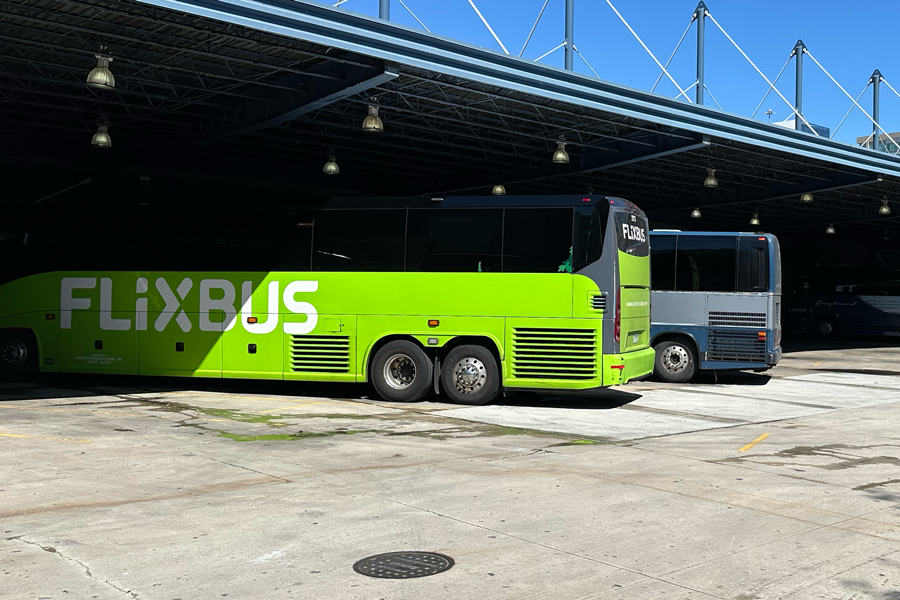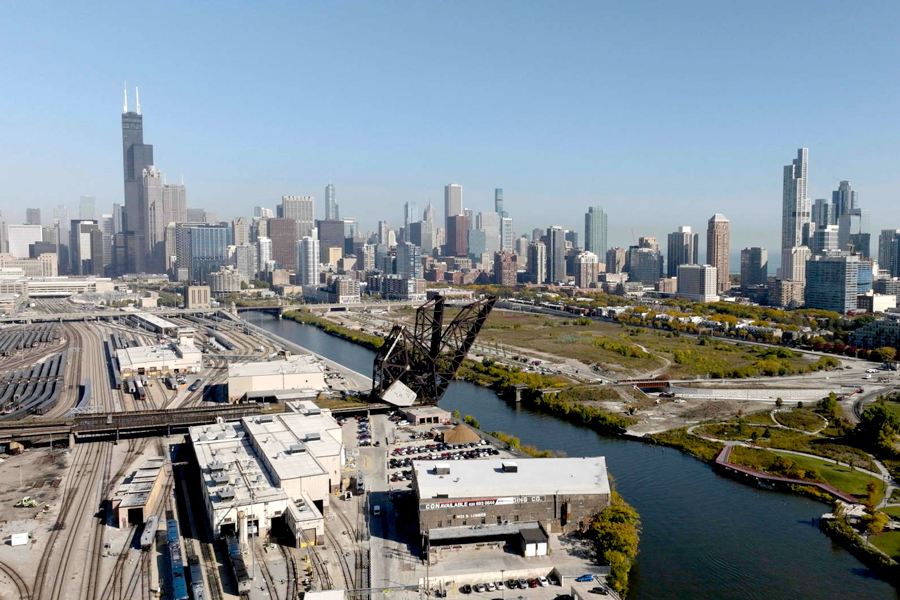Guest post by Theo Anderson Chicago’s intercity bus terminal is in limbo. Chicago has resisted calls for the city to buy and renovate the station. FlixBus, whose parent company sold the facility to a private-equity firm after buying Greyhound in 2021, now leases it on...
Madrid to Galicia HSR
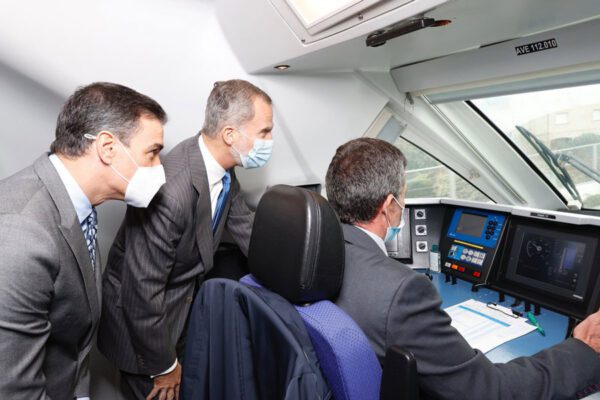
The King of Spain, Felipe VI, was there to preside over the inauguration of the new high-speed line in Galicia.
This week, high-speed trains began running on the final section of a line that connects Spain’s capital, Madrid, with the Galicia region of northwest Spain. Work on the line began in 2005. Spain’s transport minister called the just-finished section “without a doubt the most complicated of the entire Spanish rail network.”
The 68-mile section, which passes through the Galician Massif mountain range, has 30 viaducts and 30 bridges. Although much of the overall line was completed more than a decade ago, work on the new section was slowed by engineering challenges and by the global financial crisis of 2008.
The section reduces the 310-mile trip from Madrid to Ourense (in Galicia) from about 4 hours to 2 hours, 15 minutes. The number of daily round trips between the cities will increase as well, from 6 to 10. The faster travel time between Madrid and Ourense will also slash travel times between Madrid and other destinations across the Galicia region by up to 1.5 hours.
Travel times on the line will be reduced yet again—by about 20 minutes—in the summer of 2022. That’s when the Spanish train operator, Renfe, plans to introduce Talgo trains that run at up to 205 mph and have nearly 600 seats. Talgo notes that, “thanks to their high capacity and light overall weight,” they will “minimize energy consumption and multiply efficiency. This allows them to reduce greenhouse gas emissions and further enhance the position of rail as the most sustainable means of transport.”
The slashed travel times will make train travel much more competitive with flying on Madrid to Galicia routes. With check-in and terminal time factored in, the one-hour flight is roughly the same as a train trip.
Air travel currently has about 80 percent of the travel market for Madrid to Galicia. Renfe aims for the share of train travel to rise to 50 percent over the near term.
Takeaways
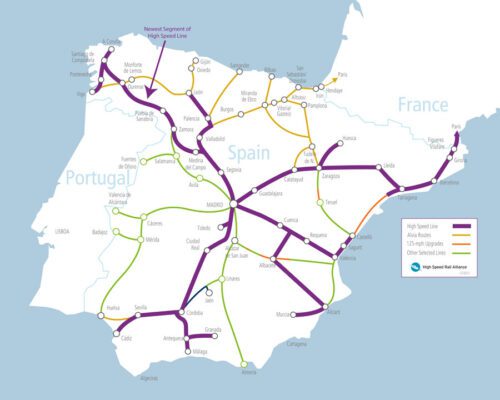
Spains’ high-speed rail network as of 2021. Spain has over 2,200 miles in service, the second largest network, second only to China.
Spains’ high-speed rail network as of 2021. Spain has over 2,200 miles in service, the second largest network, second only to China.
One big-picture takeaway for advocates of high-speed rail is that constructing a high-speed rail network isn’t an all-or-nothing proposition. Networks are built one segment at a time, usually over decades. They expand and improve as expertise increases and political will grows.
In the process, the best shouldn’t be the enemy of the good. A first-rate network is usually built on the foundation of an incomplete and less-than-ideal network. You take stock of what’s available, leverage it, and build on that.
Getting there takes persistence and patience. But it can be done—and relatively quickly—once an all-in commitment is made. Spain, after all, only committed to building its HSR network in a focused way in the early 1990s. It now has more than 2,200 miles of high-speed line—second only to China.
Another takeaway is that the complexity of the section that has just been completed—more than 60 percent of which runs through tunnels and across bridges—is helping Spain to build up its expertise. And that expertise is already at cutting-edge, world-class levels.
For example, a trunk off of the Madrid to Ourense line—running to Valladolid—contains the longest tunnel in Spain and the fifth longest railway tunnel in the world. High-speed trains pass through it at speeds up to nearly 200 mph.
As more and more cities and regions across the U.S. begin to study HSR, and high-speed lines start to become a real possibility, these takeaways from Spain will be important to keep in mind.
The only way to build a network—and to steadily build our expertise—is to actually start doing it. The challenges that seem daunting or even overwhelming now, like building tunnels through the mountains of California for its L.A. to San Francisco line, can and soon will be overcome. Examples from all over the world can point the way.
In most cases, of course, the most daunting challenges we face aren’t about topography.
The line that Spain just completed from Madrid to the Galicia region is roughly the same distance as Chicago to Cincinnati (i.e, 300 miles). It passes through mountain ranges, requiring the construction of 60 bridges and viaducts. High-speed trains from Chicago to Cincinnati, by contrast, would mostly pass through flat terrain. The same is true across much of the Midwest.
We have every incentive—economic and environmental—to get started. We have the resources. And we have a demonstrated need.
What’s holding us back, exactly?
The Latest from HSRA
Our Latest Blog Posts
Check out the latest news, updates, and high speed rail insights from our blog!
